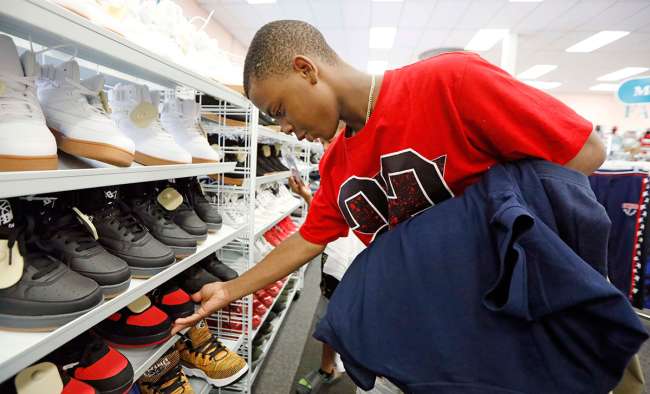Core Inflation Unexpectedly Cools as Apparel Costs Fall

A gauge of underlying U.S. inflation unexpectedly cooled in August as apparel prices fell by the most in about seven decades and medical-care costs declined, offering Americans a respite from accelerating price gains.
Excluding volatile food and energy costs, the core consumer price index rose 2.2% in August from a year earlier, compared with the 2.4% median estimate of economists surveyed by Bloomberg News, a Labor Department report showed Sept. 13. The broader CPI slowed to a 2.7% annual gain from 2.9%.
Treasury yields and the dollar declined, while stock futures were higher, as investors weighed the outlook for Federal Reserve interest-rate increases after the data. While the moderation partly reflects a near-record 1.6% monthly drop in apparel prices, a component that tends to be volatile, the broader slowdown follows a surprise decline in producer prices and suggests the path of inflation could be softer than some people expect.
“The broader trend in inflation is that it’s moved higher from where it had been, but any worry of an outbreak or idea that inflation will break out — this data casts some doubt on that,” said Kevin Cummins, senior U.S. economist at NatWest Markets.
At the same time, “I’d look past the weakness” in retail prices, Cummins said, adding that the report “doesn’t really change the calculus from the Fed’s perspective — it keeps them on a gradual pace” of rate increases.
Fed policymakers are expected to raise interest rates later this month, though a more persistent slowdown in inflation could affect their outlook for future increases. Freight costs and rising wages, along with tariffs and counterlevies, may keep putting upward pressure on inflation.
The cooling of price gains along with what last week’s jobs report showed was the fastest wage increase since 2009, meant inflation-adjusted hourly pay rose 0.2% from a year earlier, after a 0.1% decline in August.
Monthly Change
The core CPI rose 0.1% from the prior month, compared with the median estimate of economists for a 0.2% gain, and followed an annual increase of 2.4% in July. The broader CPI was up 0.2%, less than forecasts for a 0.3% increase. It was expected to rise 2.8% from a year earlier.
Besides apparel, the index for medical care fell 0.2% for a second month. The shelter category, which accounts for about one-third of the CPI, showed a 0.3% gain, in line with recent increases. Prices of new automobiles were unchanged, the first month without a gain since April, while used cars and trucks rose 0.4%.
Airfares rose 2.4% after a 2.7% advance in July, amid higher fuel prices, one of the biggest costs for airlines.
The Fed’s preferred gauge of inflation — a separate consumption-based figure from the Commerce Department — came in above the central bank’s 2% goal in July, and the figure tends to run slightly below the Labor Department’s CPI. August numbers are due Sept. 28, after the Fed’s two-day meeting.
Seasonally adjusted gasoline prices increased 3% in August from the prior month, the most since April, and were up 20.3% over the past 12 months.
Other Details
- The increase in the core CPI brought the three-month annualized gain to 1.96%, after 2.33%.
- Energy prices rose 1.9% from previous month while food costs advanced 0.1%
- The CPI is the broadest of three price gauges from the Labor Department because it includes all goods and services. About 60% of the index covers the prices that consumers pay for services ranging from medical visits to airline fares, movie tickets and rents.
With assistance from Chris Middleton and Nancy Moran.

